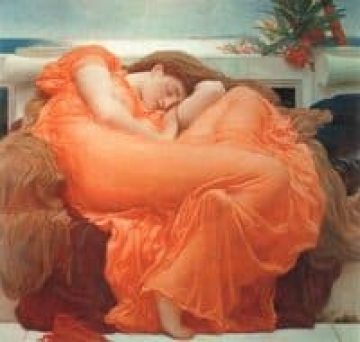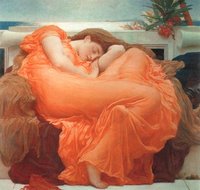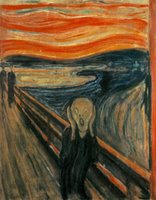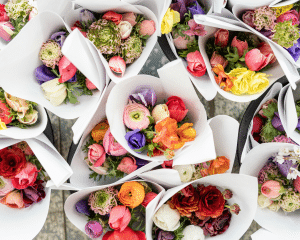On “Flaming June” by Frederic Leighton
Sleeping in a corner at noon on a bench
Too small to stretch her full 5’11”
Her full figure
I warm my hands quietly up close
To the reaching oranges climbing
The resting light
Afraid my presence is enough to
Disturb a rhythm of sleep or
Is she too deep
Shallow in slumber and curled
In summer windows
At odd angles
1998
***
I have always been in love with the ideas about how different art forms, like writing and visual arts, relate to one another. While in college, I discovered that there was actually a specific term for writing about art–ekphrasis. Some more cannonized examples of this are found in Homer’s epics and Keats’ odes. I am someone who is easily inspired by visual art to write, and have written many poems prompted by studying a work of art. As an undergrad, I had a fulfilling final semester pursuing this topic as deeply as I liked in an internship with a wonderful and influential professor, who inspired me with her quiet passion for poetry and her encouraging feedback on my writing. During that semester, I found oodles of modern and contemporary poetry about pieces of art, including the amazing book, Transforming Vision: Writers on Art . I have pulled the following quote from its introduction by Edward Hirsch for the sake of acquainting you a little more with the topic:
“Works of art initiate and provoke other works of art; the process is a source of art itself. Responses to a given work become part of the complex history of that work. There is also an intricate history of reciprocity and sibling rivalry between the arts, especially ‘the sister arts,’ poetry and painting…[there is] a long occidental tradition of ekphrasis, the verbal description of pictoral or sculptural works of art…. Ekphrastic modes inevitably address–and sometimes challenge–the great divide between spatial and temporal experience, eye and ear, visual and verbal mediums. They brave the mystery dividing the seen from the unseen, image from text. They teach us to look and look again more closely. They dramatize with great intensity the actual experience of encounter.”
One of my favorite poems from Transforming Vision is by Adam Zagajewski:
Edgar Degas: The Millinery Shop
Hats are innocent, bathed in the soft light
which smoothes the contours of objects.
A girl is working.
But where are brooks? Groves?
Where is the sensual laughter of nymphs?
The world is hungry and one day
will invade this tranquil room.
For the moment it contents itself
with ambassadors who announce:
I’m the ochre. I’m the sienna.
I’m the color of terror, like ash.
In me ships sink.
I’m the blue, I’m cold, I can be pitiless.
And I’m the color of dying, I’m patient.
I’m the purple (you don’t see much of me),
for me triumphs, processions.
I’m the green, I’m tender,
I live in wells and in the leaves of birch trees.
The girl whose fingers are agile
cannot hear the voices, for she’s mortal.
She thinks of the coming Sunday
and the rendezvous she has
with the butchers son
who has coarse lips
and big hands
stained with blood.
***
Another ekphrastic poem–this one by one of my favorite poets, Charles Wright:
Edvard Munch
We live in houses of ample weight,
Their windows a skin-colored light, pale and unfixable.
Our yards are large and windraked, their trees bent to the storm.
People we don’t know are all around us.
Or else there is no one, and all day
We stand on a bridge, or a cliff’s edge, looking down.
Our mothers stare at our shoes.
Hands to our ears, our mouths open, we’re pulled on
By the flash black flash of the lighthouse
We can’t see on the rock coast,
Notes in a bottle, our lines the ink from the full moon.
{From his book, Country Music: Selected Early Poems}
***
So, what I’m wondering from you is, have you ever tried to respond to a work of art in writing? If so, have you found that it makes you see the piece differently? What do you think the relationship between painting and poetry is all about? Do you like to compare different art forms and explore the relationship between them?









4 Responses
I wrote a poem from Flaming June years ago. She was in my freshman dorm room and thus loomed quite large (those are heady years). I’m sure it’s over-wrought, but I’d love to see if I could track it down and see. . . .
Brooke, I love this one!
I’ve not responded in writing to a work of art, although I’m intrigued by the idea and think I might try it. I loved reading the poems and seeing how they changed my perception of the paintings.
I have improvised music in response to art. I find it makes me feel more deeply connected to the art work and I also percieve and respond to it in different ways when interacting with the work rather than simply taking it in.
I’m avoiding report cards, so I’ll return to this thread (which I’ve printed out to use with my class). I think the most famous of these is “Fall of Icarus” by Breughel (painting) as reflected by Musee des Beaux Arts by Auden (poem). I have a whole series of Icarus poems that I use to talk about this painting with kids. It seems to be one of the more prescient Greek myths. Actually, my husband wants me to frame the poem and painting together for his Christmas present, so if anyone knows where I can get a quality print . . .
It’s also fun to work in reverse. I have my students draw “Mending Wall” each year while my husband gets some amazing pastels when his students draw “Disillusionment of 10 O’ Clock.” Those white nightgowns take on all sorts of forms!
Thanks for this post — you’ve given me an English lesson for next week (they’re going to *love* the word Ekphrasis — I’m not kidding. Remember the age when learning words like antidisestablishmentarianism was just *cool*?)